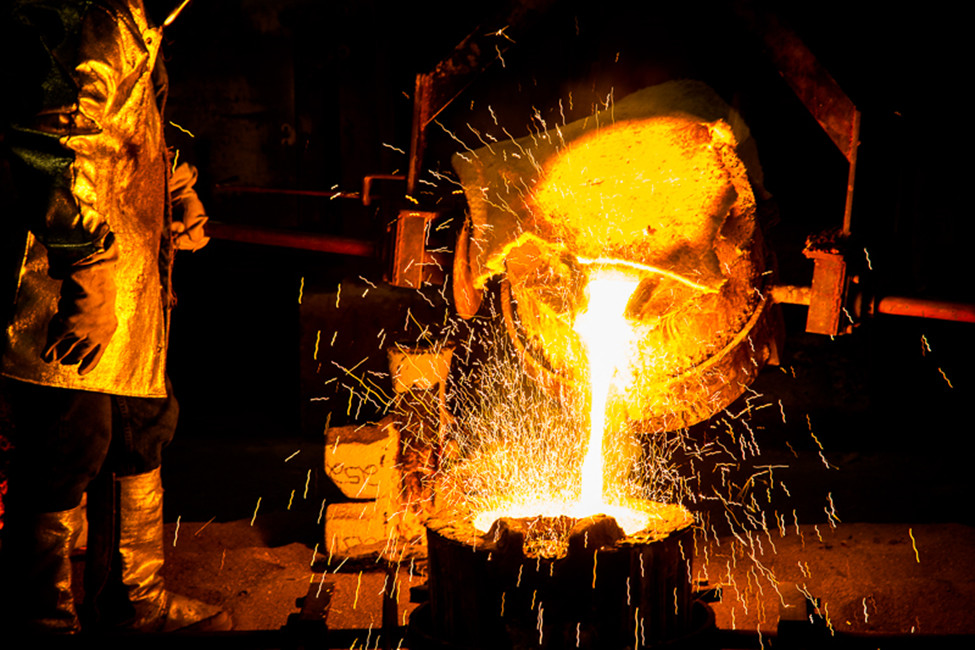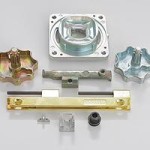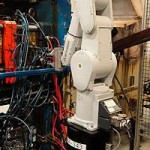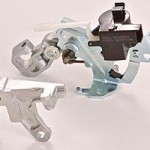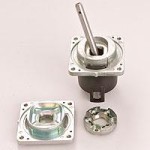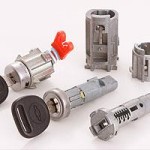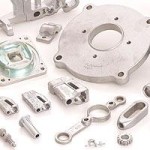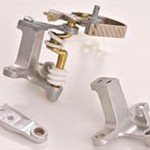Very efficient, Very flexible and a full-service competitive manufacturing partner – At Your Service!
Looking to reduce your costs?
Maybe Zinc is the Answer!
![]() Complex Geometry Parts
Complex Geometry Parts
![]() Consistent Part Quality
Consistent Part Quality
![]() Quick Die Changeovers
Quick Die Changeovers
![]() In-die de-gating with automatic separation of parts from runners is possible
In-die de-gating with automatic separation of parts from runners is possible
![]() Flash Free Castings
Flash Free Castings
![]() Low Tool Costs
Low Tool Costs
![]() Savings in Energy, Material and Labor
Savings in Energy, Material and Labor
![]() Prototyping Using Zinc Bar Stock
Prototyping Using Zinc Bar Stock
Die Casting Machines
- 10-ton, 4-slide Minicast Machines
- 30-ton, 6 X 6 Techmire Machines
- 65-ton Conventional Machines
- 25-ton, K7 Kux Vertical Machines
Secondary Machines
- Surftran Thermal Deburr
- Gibson Rotoblast
- Schwoeppe Degating Tumblers
- Ultramatic Vibrator
- Denison Multipress
- Powermatic Drill Presses
- Schwoeppe Assembly Machine
- Speedy Cuts
- Dillon Pull Tester
- 12-ton Magnum Trim Press
- 32-ton OHMA Trim Press
- Neff 1000 PSI Press
Advantages of Zinc Die Castings vs. Other Processes
Design engineers turn to zinc die castings for component parts because the manufacturing process combines precision and cost effectiveness with the exceptional mechanical and physical properties of zinc alloys.
Below are just a few of the reasons why you should consider zinc die castings instead of plastic moldings, stampings, castings, or forgings when designing your new product.
Plastic Molding Compared to Zinc Die Casting
Zinc die casting produces stronger parts with closer tolerances that have greater stability and durability. These parts have greater resistance to temperature extremes than molded plastic parts and superior electrical properties.
Sand Castings Compared to Zinc Die Casting
Zinc die castings produce parts with thinner walls, closer dimensional limits and smoother surfaces. Production is faster and labor costs per casting are lower. Finishing costs are also less.
Permanent Mold Casting Compared to Zinc Die Casting
Zinc die casting offers the same advantages versus permanent molding as it does compared with sand casting.
Forging Compared to Zinc Die Casting
Zinc die castings produce more complex shapes with closer tolerances, thinner walls and lower finishing costs. Cast coring holes are not available with forging.
Stamping Compared to Zinc Die Casting
Zinc die casting produces complex shapes with variations possible in section thickness. One cast part may replace several stampings, resulting in reduced assembly time.
Screw Machine Products Compared to Zinc Die Casting
Zinc die casting produces shapes that are difficult or impossible from bar or tubular stock, while maintaining tolerances without tooling adjustments. These castings require fewer operations and reduce waste and scrap.
Video: Four-Slide Die Casting Technology
Zinc Die Casting Parts Gallery
High-Volume Production
Zinc Castings are some of the highest volume produced parts in the industry. Here’s why:
![]() Precision Tolerances – allow the opportunity to eliminate machining. “NET SHAPE”, ZERO MACHINING. This is a Big advantage.
Precision Tolerances – allow the opportunity to eliminate machining. “NET SHAPE”, ZERO MACHINING. This is a Big advantage.
![]() Strength and Ductility – Zinc offers up to 60,000 psi and superior elongation and formability for crimping, bending and riveting operations.
Strength and Ductility – Zinc offers up to 60,000 psi and superior elongation and formability for crimping, bending and riveting operations.
![]() Long Tool Life – low casting temperatures make life easy with less thermal shock and Extended Life for tools.
Long Tool Life – low casting temperatures make life easy with less thermal shock and Extended Life for tools.
![]() Zinc is Tough – it has great impact resistance and significantly more than Aluminum cast alloy, plastics, and grey cast iron.
Zinc is Tough – it has great impact resistance and significantly more than Aluminum cast alloy, plastics, and grey cast iron.
![]() Easy Finishing – Readily plated, polished, chromated and anodized.
Easy Finishing – Readily plated, polished, chromated and anodized.
![]() Thin Wall Castability – material if very fluid and easy to cast
Thin Wall Castability – material if very fluid and easy to cast
![]() Trouble Free Machining – Just not hard to do if needed.
Trouble Free Machining – Just not hard to do if needed.

